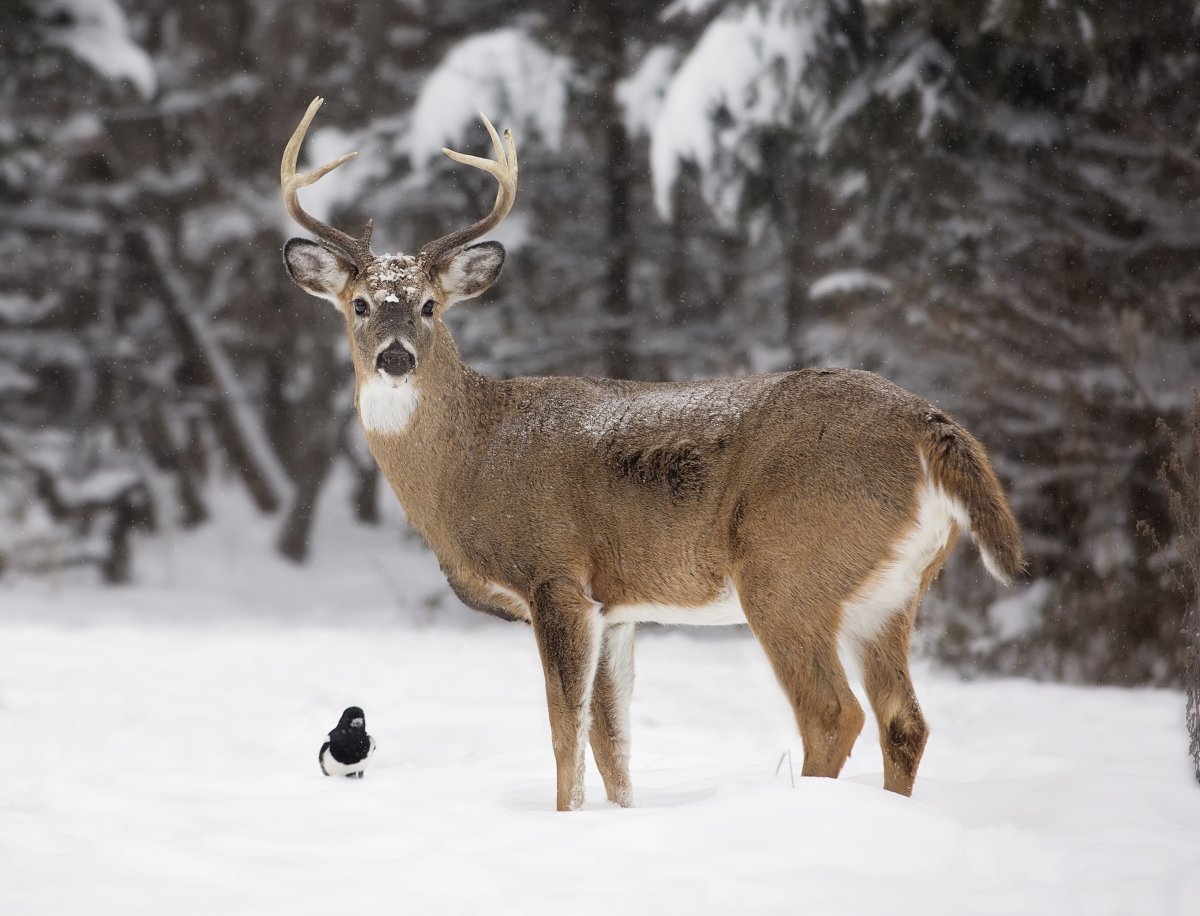A deadly condition nicknamed "zombie deer disease" has spread even further across North America, with fears that the disease may soon jump from animal to people.
The disease, officially known as chronic wasting disease (CWD), has been discovered in two deer in British Columbia in Canada, marking the first time that the condition has been detected in the province.
Counties across at least 31 U.S. states have also previously seen cases of the disease as of November 2023, according to the Centers for Disease Control and Prevention (CDC), as well as being detected in 23 percent of samples collected during the 2022-2023 hunting season in Canada's Alberta province. It was also detected in Yellowstone National Park for the first time in November.
Newsweek has reached out to the CDC via email for comment.

CWD is a prion disease, caused by a misshapen protein that triggers other proteins in the body to become abnormal, causing sickness and often eventual death. Other prion diseases include mad cow disease, or Bovine Spongiform Encephalopathy (BSE), and Creutzfeldt-Jakob Disease (CJD).
CWD was first detected in the 1960s in a captive deer at a Colorado research facility and in wild deer in the early 1980s, and has since spread across the continental U.S. and Canada, as well as Norway, Sweden and Finland, infecting deer and elk species.
Infection rates may have exceeded 10 percent of the wild deer and elk population in many places, with some localized infection rates reaching over 25 percent in some instances, the CDC states on its website. One herd of captive deer saw as many as 79 become infected.
The disease is spread between animals via body fluids, including saliva, blood, urine and feces, both directly and after exposure to contaminated food or soil. The prions can remain infectious for a long time in the environment, so it can infect others long after an animal has died.
"Rarely does a deer live to that cool sounding "Zombie" stage in the wild," Allan Houston, a professor of forest and wildlife ecology at the University of Tennessee, told Newsweek. "CWD predisposes them to other mortalities in the latter stages, and quite often before casual observation can distinguish between a healthy deer and one with CWD. As a result, because people do not see Zombies staggering around, they tend to underestimate CWD's impacts and can even doubt its presence.
"When a deer becomes infected, the projected lifespan is approximately 18 to 30 months, and the disease's debilitating impacts move slowly, at first. As the deer's system weakens, injury, car collisions, ancillary diseases become more likely, and, in the wild, the deer is killed before the Zombie stage is seen. Evidence of the disease's impact, individual by individual, quickly fades into the landscape as scavengers quickly drag the remains here and there, and leaves and vegetation and time effectively hide them from view."
It can take up to a year for symptoms to develop, which may include weight loss, confusion, drooling, and stumbling, and other neurological symptoms. The disease is fatal, and there is no cure yet developed.
With the disease spreading so widely across North America, there are fears that the disease may soon jump from animals to humans.

This happened with animal prion diseases before, with Mad Cow Disease infecting thousands of people in the mid-1990s in the United Kingdom due to eating meat from infected cows. The disease spread between the cows themselves as a result of calves being fed infected bovine meat-and-bone meal.
"The mad cow disease outbreak in Britain provided an example of how, overnight, things can get crazy when a spillover event happens from, say, livestock to people," CWD researcher Cory Anderson told The Guardian in December. "We're talking about the potential of something similar occurring. No one is saying that it's definitely going to happen, but it's important for people to be prepared."
There have been no reported cases of CWD in humans thus far, but it has been seen to have jumped from deer and elk to other species, including squirrel monkeys and lab mice.
One study currently in progress has shown that CWD can also be transmitted to macaque monkeys—more genetically similar to humans than squirrel monkeys—after eating meat or brain tissue infected with CWD, according to the CDC.
Despite this, it is still unknown if CWD is capable of infecting humans. While scientists continue to research how CWD spreads and which species it affects, wildlife officials will attempt to prevent the spread of the disease between deer and elk across North America.
"There is no direct evidence that the disease can be transmitted to humans and there have been no cases of the disease in humans. However, to prevent any potential risk of transmission or illness, Health Canada and the World Health Organization recommend people not eat meat or other parts of an animal infected with chronic wasting disease," British Columbia's Ministry of Water, Land and Resource Stewardship said in a statement on Thursday.
It added: "In response to the disease being detected in neighbouring jurisdictions, the Province established a surveillance and response plan for chronic wasting disease to lessen the risk of the disease spreading in B.C."
Update 2/5/24, 1:13 p.m. ET: This article was updated with comment from Allan Houston.
Do you have a tip on a science story that Newsweek should be covering? Do you have a question about prion diseases? Let us know via science@newsweek.com.
Uncommon Knowledge
Newsweek is committed to challenging conventional wisdom and finding connections in the search for common ground.
Newsweek is committed to challenging conventional wisdom and finding connections in the search for common ground.
About the writer
Jess Thomson is a Newsweek Science Reporter based in London UK. Her focus is reporting on science, technology and healthcare. ... Read more
To read how Newsweek uses AI as a newsroom tool, Click here.






